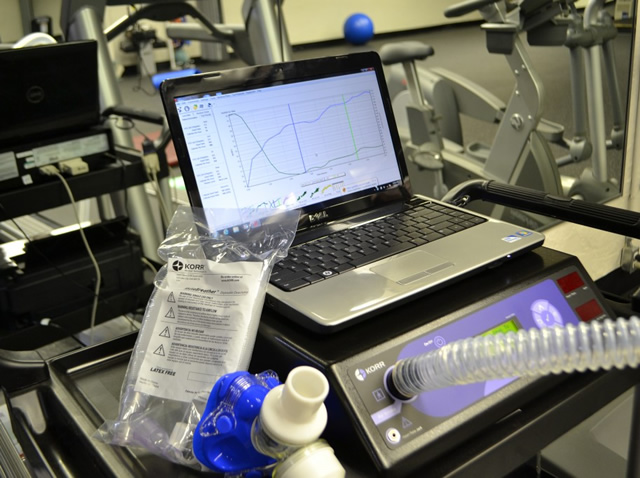Metabolic syndrome (MetS) screening is just one of the many preventive services that all affordable health care marketplace plans and many other network provider health plans must cover without charging covered members a copayment or coinsurance, even if a covered member hasn’t met their yearly deductible.
MetS is a condition that exists when 3 out of 5 metabolic abnormalities are found. This group of 5 metabolic criteria includes; low levels of HDL (good cholesterol), high blood pressure, high levels of fasting blood sugar, high levels of fasting triglycerides, and waist circumference greater than 40 inches for men or 35 inches for women. When any 3 of these criteria are met there is a marker increase risk of heart disease, stroke and diabetes.
Research published by the Integrated Benefits Institute shows that about one-third of the workforce has at least one of these risk factors. “The rate of risk for disabling events like heart attack or stroke goes up exponentially as people have more and more of these risk factors,” according to Kim Jinnett, the institute’s research director.
According to Nancy Novo Lusignan, benefits manager of employee wellness and work/life programs at Aetna ” MetS is present in 60% of people considered to be obese, 22% of those who are overweight and 5% of those at a healthy weight. She adds that risk factor increases average medical costs by 24%.
Literature supports the position that incentives for employees who voluntarily participate in MetS screening improves both worker health and productivity. Incentives offered by various employers often originate by the network insurance providers who have seen a considerable reduction in their portion of healthcare costs as a result of identifying one or more of the risk factors and getting medical assistance for those affected. Reducing these costs by mitigating the conditions that contribute to costs, benefits both the insurance providers and the insured .
Incentives can range from cash payouts to discounts on annual insurance premiums or additions to employee health spending accounts that help pay a portion of the employees co-pay or deductable. Incentives are usually paid out for having less than 3 of the risk factors… not having MetS, however with the passing of the affordable care act, additional incentives will most likely be developed for individuals who are found to have MetS, when they participate in other programs designed to help the employee reduce or eliminate MetS.
However, not everyone who is offered these incentives elects to participate in MetS screening. In some cases the employee knows or suspects they have one or more of the risk factors and elect not to be tested. Unfortunately, they may know they are overweight of have a larger waist circumference, but may not be aware they have high blood pressure, elevated triglycerides, decreased HDLs, or elevated blood sugars. As a result, in addition to missing out on incentives, they also miss an opportunity to be offered or to seek medical assistance for a minor condition, that if gone untreated, could become life threatening .
Other individuals may have previously been found to have MetS, and see no reason to be re-tested. Unfortunately these individuals miss out on incentives and the opportunity to discover their current status. These individuals may also miss out on supportive opportunities such as free health coaching or disease management coaching that will assist them in making healthy lifestyle changes to reduce the associated health risk.
This reluctance may also come from denial of their condition, or a fear of invasion of privacy or that somehow their employer’s HR department will get access to this information; highly unlikely because the information is collected by the insurance companies and protected under HIPAA regulations. What the employer often gets is aggregate information on their entire employee heath rather than specific individual results. This aggregate information is often used as a baseline ofr development of programs that will benefit the majority of employees as a whole.
In some cases simply reducing one’s weight can have a positive impact one or more of these MetS risk factors. In a study published by the Institute of Health, it was noted that “although weight loss is an effective treatment for metabolic syndrome, standard health insurance rarely covers intensive behavioral treatment programs.”, that focus on behavioral change strategies to promote weight loss. They also do not routinely cover the cost of “diet” programs. This suggests that in addition to offering financial incentives for voluntarily participating in a MetS program, offering additional financial incentives for weight management, to employees who voluntarily elect to be screened for MetS, may increase the interest in both screening and participating in weight management programs.
As noted in a article posted in commonhealth.wbur.org, ” Federal law generally prohibits plans from charging different premiums to different employees based on a health factor. However, there is an exception for “bona fide wellness” programs. These programs allow an employer to vary premiums up to 20% based on a health factor (such as cholesterol and weight) but only if the employer offers a reasonable alternative to those for whom it is unreasonably difficult to meet the standard.”
Including financial incentives in the form of weight loss programs for individuals who do not qualify for the financial MetS incentive will help meet this requirement.
As pointed out in a previous article”, more employers are screening for MetS, and as the embrace
screening programs like MetS they are getting more creative in offering incentives. So even if you think you won’t pass the MetS screening, consider this; you may still be eligible for an incentive and even in the absence of incentives, medical screening is still an important component of anyone’s preventive healthcare.
This information is not intended to replace a one-on-one relationship with a qualified health care professional and is not intended as medical/nutritional/fitness advice. Information presented is subject to change as additional discoveries are made or additional research is published.















